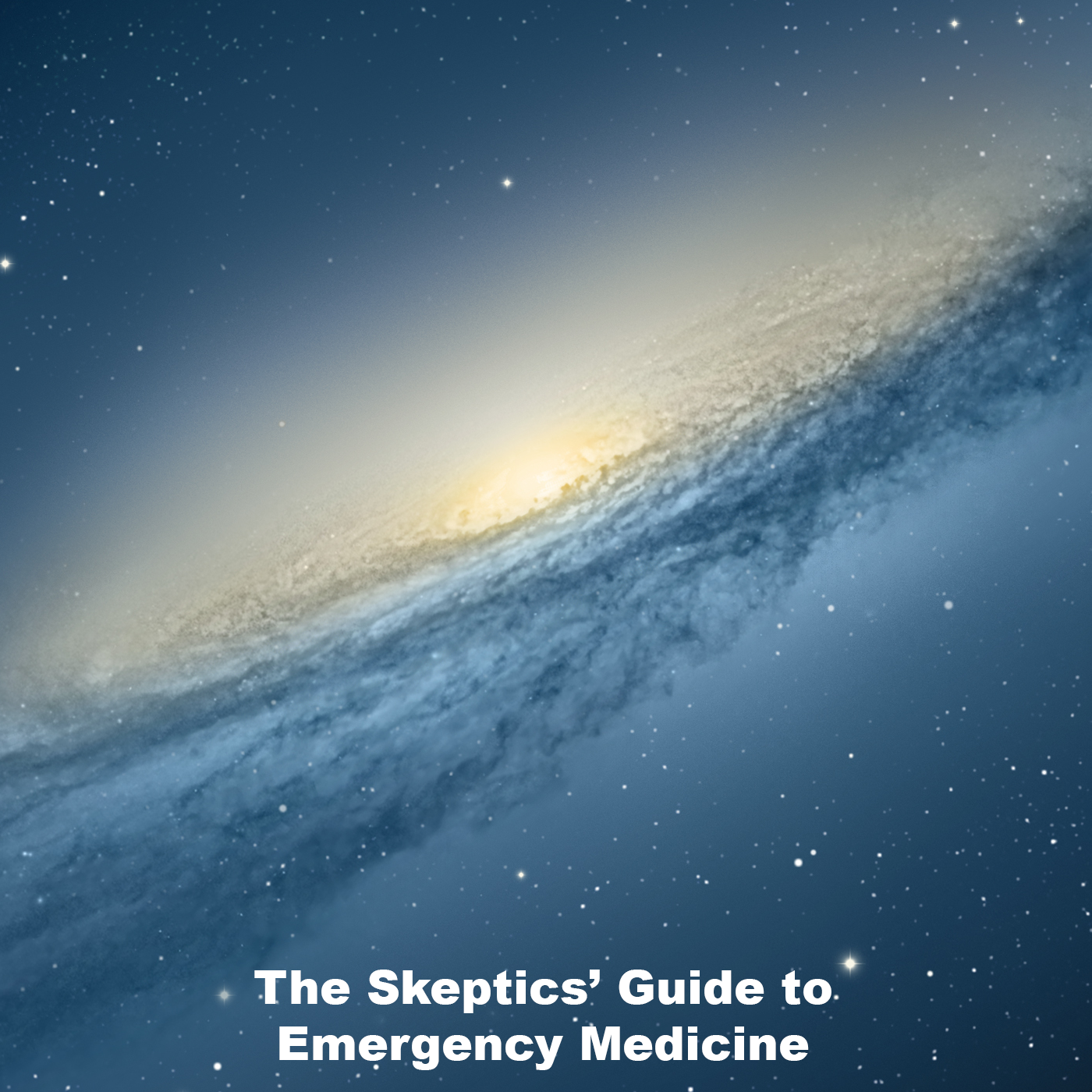

The Skeptics Guide to Emergency Medicine
Dr. Ken Milne
Meet ’em, greet ’em, treat ’em and street ’em
Episodes
Mentioned books

Sep 21, 2024 • 26min
SGEM#453: I Can’t Go For That – No, No Narcan for Out-of-Hospital Cardiac Arrests
Dr. Chris Root, an experienced emergency medicine physician and former NYC paramedic, delves into the controversial use of naloxone in out-of-hospital cardiac arrests. They discuss a compelling case of a young man possibly linked to opioid use, exploring the impacts of naloxone on survival and recovery. The conversation also critiques the methodologies used in studies evaluating naloxone's efficacy, emphasizing the need for robust evidence. Additionally, they reflect on the emotional ramifications for families involved in such emergencies.

Sep 14, 2024 • 35min
SGEM#452: I’m Still Standing – After the Allergy Challenge
Dr. Kirsty Challen, a Consultant in Emergency Medicine, joins to tackle the complexities of managing penicillin allergies in the emergency department. She discusses the alarming prevalence of inaccurately reported allergies and their impact on treatment choices. The conversation highlights a recent study on the safety of beta-lactam allergy challenges, revealing that many patients labeled as allergic may not be. Challen emphasizes the importance of accurate assessments and collaborative practices in improving patient outcomes while mitigating antibiotic resistance.

Aug 31, 2024 • 0sec
SGEM Xtra: I’m Just An Ordinary Average Guy – Dr. Mel Herbert
Join Dr. Mel Herbert, a renowned emergency medicine physician and educator, as he discusses his transformative book, "The Extraordinary Power of Being Average." Mel reveals how embracing his perceived average status has fueled his success. The conversation touches on the relatable challenges of childhood learning struggles and the life-changing impact of mentorship. They explore the Tall Poppy Syndrome, comparing cultural attitudes toward success in Australia versus the U.S. It’s a heartfelt dialogue about resilience, mental health, and the beauty of shared experiences.

Aug 25, 2024 • 25min
SGEM#451: I’ve Become So Numb – Serratus Anterior Plane Blocks for Rib Fractures
Dr. Sean Baldwin, an Emergency Physician from Sydney with a keen focus on digital health, discusses the complexities of managing rib fractures in older patients. He highlights a case of a 67-year-old man and the challenges these injuries present. The conversation delves into the innovative use of serratus anterior plane blocks for pain relief, revealing research findings that suggest reduced opioid use while maintaining health outcomes. They also touch on the need for further studies to validate the efficacy and safety of this promising technique.

Aug 17, 2024 • 30min
SGEM Xtra: The Final Countdown – To IncrEMentuM 2025
Dr. Francisco Campillo Palma and Dr. Carmen María Cano are two expert emergency medicine doctors from Spain, deeply involved in organizing the IncrEMentuM 2025 conference. They discuss the excitement building for this event, scheduled for March 2025, and its role in establishing a specialty in Spanish emergency medicine. Their conversation includes innovative educational approaches and the importance of skepticism in the field. They also highlight engaging pre-conference workshops and the value of vibrant networking opportunities, enticing listeners to join.

Aug 10, 2024 • 38min
SGEM#450: Try Again – Andexanet for Factor Xa Inhibitor–Associated Acute Intracerebral Hemorrhage
Dr. Vasisht Srinivasan, an Emergency Medicine physician and neurointensivist at the University of Washington, discusses a critical case of a patient with a suspected intracerebral hemorrhage. He delves into the management of hemorrhagic strokes, highlighting the role of reversing Factor Xa inhibitors like Andexanet. The conversation touches on the efficacy and ethical implications of recent clinical trials, revealing concerns about potential conflicts of interest and thrombotic events. Ultimately, it emphasizes the balance between emerging treatments and patient outcomes.

Aug 3, 2024 • 37min
SGEM#449: Bad Boys What’cha Gonna Do – Patient Perceptions of Behavioral Flags in the ED
Dr. Neil Dasgupta, an emergency medicine physician and program director from Long Island, discusses alarming trends of violence in emergency departments. He explores the concept of behavioral flags in electronic health records, revealing patient perceptions and concerns about bias. The conversation highlights communication challenges in addressing these flags and the importance of transparency to combat racial disparities in care. Dasgupta emphasizes the need for effective communication strategies that consider diverse patient backgrounds and improve healthcare equity.

Jul 27, 2024 • 30min
SGEM#448: More than A Feeling – Gestalt vs CDT for Predicting Sepsis
Dr. Justin Morgenstern, an emergency physician and the mastermind behind www.First10EM.com, dives deep into the complexities of sepsis prediction. He questions the efficacy of traditional screening tools like qSOFA and MEWS, advocating for the critical role of clinical judgment. The conversation highlights notable findings from a study involving over 2,500 patients that challenges the need for immediate antibiotics. Morgenstern emphasizes the importance of reevaluating current practices to better enhance patient outcomes in emergency settings.

Jul 20, 2024 • 25min
SGEM#447: Just What I Needed – Preoxygenation Prior To Intubation
Dr. Aine Yore, an experienced emergency physician and healthcare policy advocate, discusses the critical topic of preoxygenation in airway management for ill patients. She dives into the PREOXI trial, comparing non-invasive ventilation methods like CPAP against traditional strategies, revealing insights into hypoxemia rates. The conversation highlights the complexities of intubation strategies, challenges in measuring clinical outcomes, and the promise of non-invasive ventilation to enhance safety during emergencies. Family communication amidst urgent care is also emphasized.

Jul 13, 2024 • 36min
SGEM#446: Finding Pneumo…nia in Febrile Infants
Dr. Christina Lindgren, a Pediatric Emergency Medicine Attending at Children’s National Hospital, delves into the nuanced diagnosis of pneumonia in febrile infants. She highlights the rarity of radiographic pneumonia and the critical role of shared decision-making with families. Discussion on viral testing reveals challenges in identifying bacterial infections amidst viral overlaps. Innovative diagnostic methods like ultrasound are explored, alongside the complexities of differentiating pneumonia from bronchiolitis, making the episode a rich source of insights for healthcare professionals.


